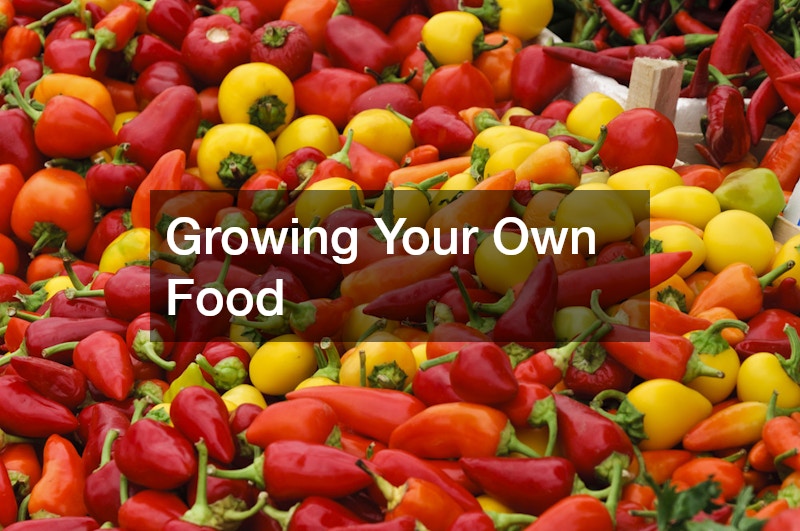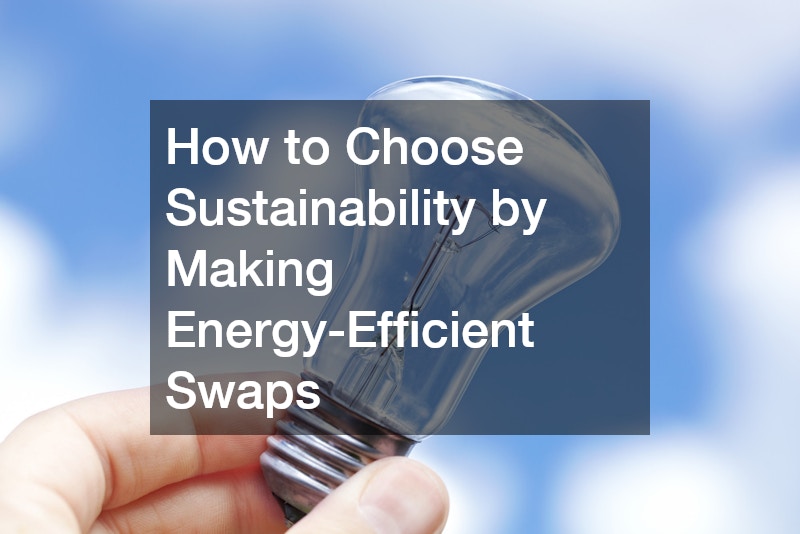Introduction
In an age where climate change and environmental degradation are pressing global concerns, it has never been more critical to choose sustainability in our daily lives. This mindset promotes the responsible use of resources while embracing alternative solutions that lessen our environmental impact. From energy sources to water management, adopting sustainable practices today can lead to a healthier planet for future generations.
Choosing sustainability is not merely a choice, but a necessity in building a resilient future. By integrating environmentally friendly alternatives into our lifestyles—whether through solar installation for our homes or incorporating garden practices that benefit our health—we create a sense of harmony between our needs and the planet’s resources. Such practices foster an ecosystem where we not only thrive but also protect the natural world around us.
In this article, we will explore various aspects of sustainability ranging from energy solutions and self-sufficiency to water management and urban development. We will delve into how we can make conscious decisions that prioritize sustainability, showcasing innovations like electric vehicles and irrigation systems that harmonize with nature. Ultimately, the goal is to encourage you to reflect on how you too can choose sustainability in your life.
Energy Sources

One of the most impactful ways to choose sustainability is through clean energy sources such as solar installation. Solar panels harness energy from the sun, converting it into electricity that powers homes and businesses without emitting harmful pollutants. By opting for this renewable energy source, individuals can significantly reduce their carbon footprint while providing for their energy needs sustainably.
Beyond the environmental benefits, solar installation often leads to substantial financial savings over time. Many regions now offer incentives for homeowners to adopt solar technologies, making the switch economically feasible. As solar technology advances, efficiency improves, allowing homeowners to generate more energy and further minimize their reliance on fossil fuels.
Furthermore, choosing sustainability by utilizing renewable energy sources can bolster community resilience. An increasing number of local utility companies are investing in solar farms, creating jobs and decreasing energy costs for residents. By adopting solar installations, we actively support a cleaner future while promoting local economies.
Electric Vehicles
Transitioning to electric vehicles (EVs) is another vital way to choose sustainability. As transportation accounts for a significant percentage of greenhouse gas emissions, electric vehicles offer a cleaner alternative powered by renewable energy. The development and installation of EV chargers are essential infrastructure components that facilitate this transition, making it easier for individuals to adopt electric vehicles.
Moreover, the technology behind electric vehicles continues to evolve, resulting in enhanced performance and range. Many manufacturers now offer various EV models tailored to different lifestyle needs, from compact cars to larger SUVs. Choosing an electric vehicle not only reduces emissions but can also provide long-term cost savings through lower fuel and maintenance expenses.
As public excitement around electric vehicles grows, so do their benefits for urban environments. Enhanced electric vehicle charging infrastructure helps reduce congestion and pollution in cities, contributing to better air quality and overall public health. The shift toward EVs is a promising step forward in achieving a sustainable future for urban transportation.
Benefits of Flowers
When we talk about sustainability, the importance of biodiversity often arises, highlighting the role of a flower nursery in enhancing our ecosystems. Flower nurseries play a crucial part in promoting native plant species, which are essential for maintaining local wildlife, supporting pollinators, and enriching environmental aesthetics. Choosing to grow flowers not only beautifies our surroundings but actively contributes to a more sustainable ecosystem.
In addition to environmental benefits, flower nurseries can provide educational opportunities for communities. They often host workshops and events that teach individuals about pollinator-friendly gardening practices and the importance of maintaining bio-diverse gardens. By supporting nurseries, we empower communities to make informed decisions that prioritize sustainability and environmental stewardship.
In cultivating flowers, we also reap numerous psychological and health benefits. Studies have shown that spending time in nature and surrounding ourselves with flora can reduce stress, enhance mood, and improve overall well-being. When we choose sustainability through planting flowers, we foster not only beauty but a healthier lifestyle.
Growing Your Own Food

Growing your own food is perhaps one of the most empowering ways to choose sustainability. Gardening encourages a direct connection to the food we consume, promoting healthier eating habits while reducing our carbon footprint related to food transportation. With a little space and knowledge, anyone can cultivate a productive garden, creating a sustainable food source right in their backyard.
Home gardening also fosters a sense of community and shared resources. Community gardens allow neighbors to collaborate, exchange ideas, and cultivate their favorite crops together, supporting local food initiatives. Additionally, these gardens can serve as an educational tool, helping the community understand the importance of sustainable agricultural practices.
Moreover, engaging in gardening practices such as organic cultivation can enhance sustainability efforts further. Using natural pest control and avoiding synthetic fertilizers can improve soil health and yield nutrient-rich crops. By choosing to grow our own food, we take an essential step in reducing reliance on industrial agriculture and, consequently, its environmental impact.
Keeping Food Sources Hydrated
Effective water management is critical for anyone aiming to choose sustainability in food production. An efficient irrigation system is essential for maintaining healthy crops while preventing water waste. By using modern irrigation techniques, farmers and home gardeners alike can cultivate food sustainably while preserving vital water resources.
Drip irrigation, for example, delivers water directly to the plant’s roots, minimizing evaporation and runoff. This targeted method of watering promotes healthier plants and reduces the need for excessive water, illustrating how we can choose sustainability in agricultural practices. Implementing efficient irrigation systems in local farms not only benefits crops but conserves essential water supplies for future use.
Furthermore, rainwater harvesting systems have gained popularity as a sustainable practice for irrigation. By capturing and storing runoff from roofs and paved surfaces, gardeners can utilize this water resource for their gardens and landscapes. Choosing these methods not only supports sustainability but also reduces dependence on municipal water resources.
Strategic Tree Placement
When considering sustainable practices, strategic tree placement deserves attention. A reputable tree company can help homeowners and communities plant trees in a manner that maximizes their environmental benefits. Trees provide shade, improve air quality, and contribute to biodiversity, offering numerous ecological advantages that align with sustainability efforts.
Beyond their ecological role, well-placed trees can significantly reduce energy costs. By strategically planting trees around buildings, homes can benefit from natural heating and cooling, minimizing the need for artificial climate control systems. This energy efficiency translates into lower utility bills, aligning financial savings with environmental responsibility.
Additionally, community tree-planting initiatives can foster social cohesion. Collaborating on tree-planting projects encourages community involvement, improves neighborhood aesthetics, and enhances urban environments. When communities choose sustainability through the strategic placement of trees, they create greener, healthier places for everyone.
Water Sources

Access to clean water is fundamental, making water wells an important aspect of sustainable living. These natural sources can provide communities with fresh water, largely reducing dependence on municipal systems that may overdraw water supplies. By opting for water wells, individuals can choose sustainability by tapping into a natural resource, provided it is managed responsibly.
Moreover, water wells can significantly reduce energy consumption associated with water transportation. Traditional systems often utilize substantial energy to pump water from distant sources; however, local water wells mitigate this issue by supplying water directly from the ground. This method not only conserves energy but also illustrates how choosing sustainability can help local communities thrive.
Ultimately, the management of water wells must be approached mindfully to ensure long-term sustainability. Regular testing for contaminants and sustainable drawing practices are essential to maintain water purity and availability. A commitment to maintaining this resource helps secure a lifeline for future generations, reinforcing the importance of responsible stewardship.
Drinking Clean Water
Ensuring access to drinking clean water is an essential aspect of sustainability. Water filtration systems provide a critical solution to improve the quality of drinking water and eliminate harmful contaminants. By installing effective filtration systems in homes, families can take responsibility for their health while minimizing plastic waste from bottled water.
Investing in a water filtration system can also contribute positively to the environment. Rather than purchasing countless plastic bottles, utilizing a filtration system encourages the use of reusable containers, drastically reducing plastic waste. Furthermore, with the capability to purify water, individuals can help lessen reliance on single-use plastics—an active choice for sustainability.
Moreover, clean drinking water fosters community health and supports broader sustainability goals. Access to clean water is vital for overall well-being, reducing health conditions caused by contaminants. When communities choose sustainability by investing in filtration systems, they not only improve personal health but also work collectively toward a healthier public environment.
Treating Your Water
In our pursuit of sustainability, it is essential to consider the treatment of water to ensure purity. A water softener system is an effective method for addressing hard water issues, which can lead to problems such as scale buildup and damaged appliances. By installing a water softener system, households can improve the quality of their water, making it more suitable for everyday use.
Choosing sustainability extends to the appliances we use and the resources we consume. A water softener system can lead to lower energy consumption and prolong the lifespan of plumbing and appliances by reducing mineral deposits. By investing in such technology, we consciously choose to elevate our quality of life while respecting our environmental commitments.
Furthermore, performing regular maintenance on water systems fosters longevity and performance. Practicing sustainability involves being proactive, and ensuring that all systems function efficiently while minimizing waste. The result is a cohesive living environment where healthy practices can flourish.
Window Coverings and Tinting

Lastly, window coverings and tinting present a practical approach to maximizing energy efficiency within our homes. Custom window treatments can significantly reduce the energy needed for heating and cooling by controlling sunlight and heat gain effectively. When residents choose sustainability through thoughtful window designs, they experience reduced energy costs without sacrificing comfort.
Moreover, investing in custom window solutions can bolster privacy and enhance aesthetics, contributing positively to the interior environment. Various materials and textures promote creativity while blending perfectly with existing decor, showcasing that sustainability can be both functional and stylish. Choosing the right window coverings allows individuals to create inviting spaces that are also energy-efficient.
Additionally, effective window solutions can improve a home’s overall value by increasing energy efficiency. Potential homebuyers increasingly seek out properties that demonstrate sustainability; homes equipped with energy-efficient windows often highlight this commitment. By prioritizing energy-conscious design, homeowners position themselves as responsible contributors to environmental protection and sustainable living.
Conclusion
In conclusion, choosing sustainability encompasses a range of practices and decisions that profoundly influence our lives, communities, and the environment. From adopting solar energy and electric vehicles to cultivating gardens and implementing efficient water management systems, these choices deliver a multitude of benefits—environmental, financial, and health-related. At its core, sustainability is about safeguarding the planet’s resources and ensuring a vibrant, thriving world for generations to come.
As we’ve explored, the path to sustainability is diverse, with opportunities to engage in meaningful practices at both individual and community levels. Initiatives such as growing your food, supporting flower nurseries, and strategically planting trees contribute to healthier ecosystems while enhancing personal and collective well-being. Similarly, investments in advanced technologies like water filtration systems and renewable energy sources empower us to minimize our environmental impact. Each of these actions reflects a broader commitment to creating harmony between human activity and the natural world.
Ultimately, sustainability is not a single action but a mindset and a continuous journey. It requires conscious decisions, ongoing education, and collaboration across communities. By choosing sustainability, we redefine our relationship with the Earth, moving toward a future marked by balance, resilience, and shared prosperity. Together, we can build a legacy of stewardship, ensuring that our choices today lead to a brighter, healthier tomorrow.

